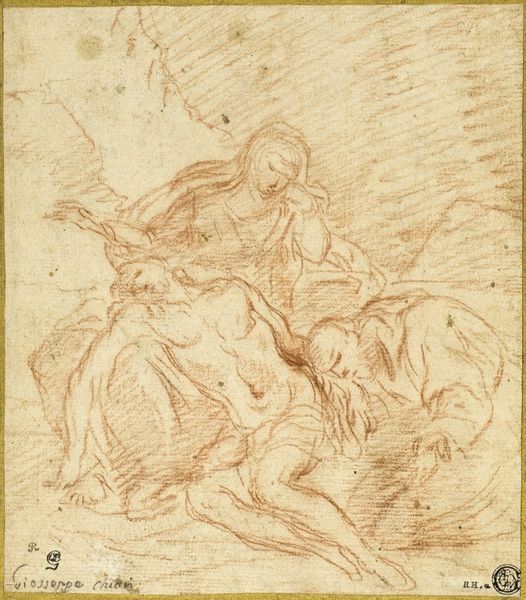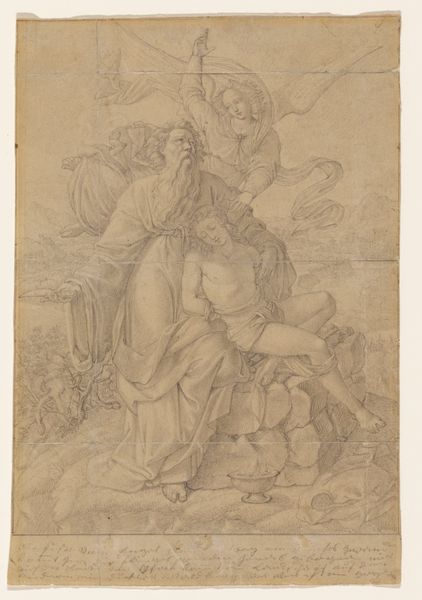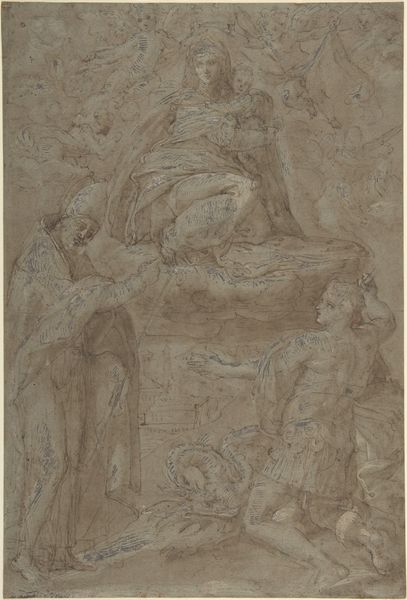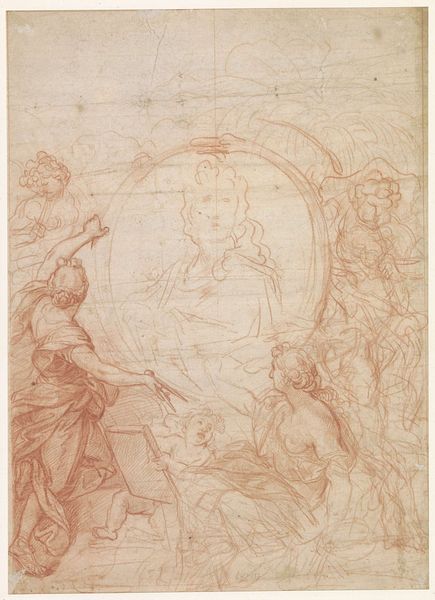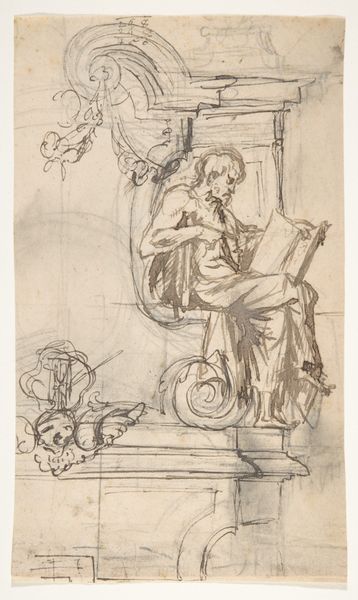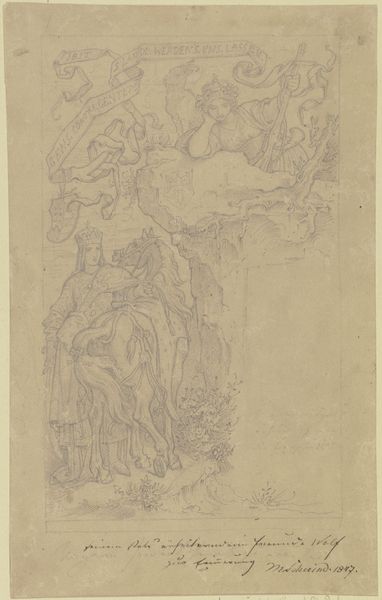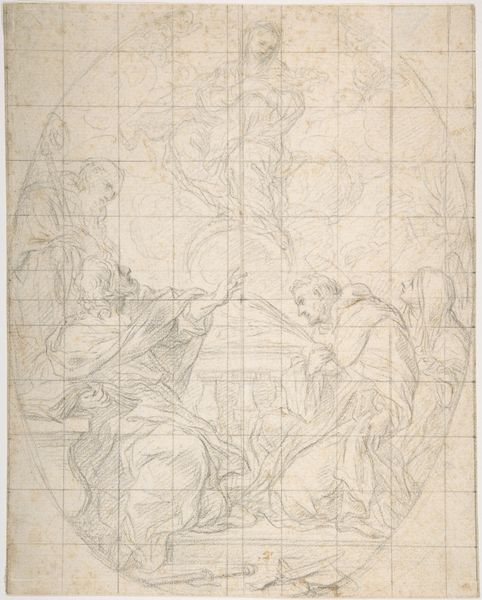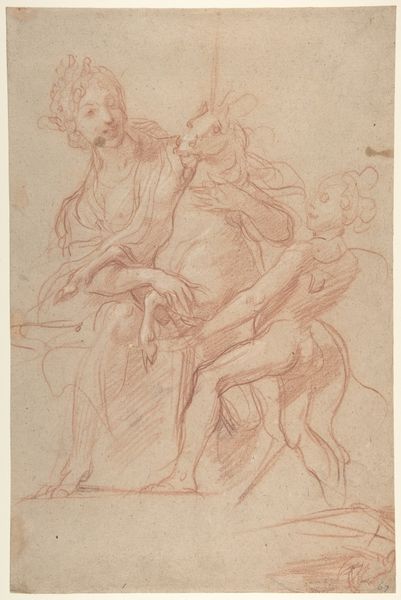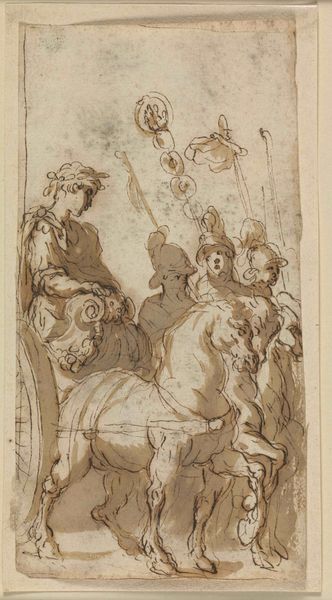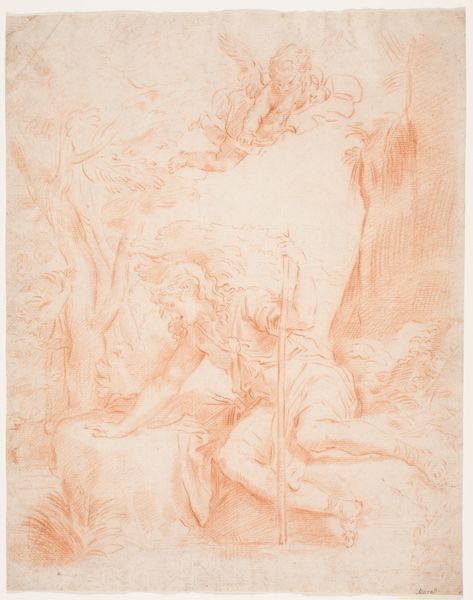
Seated Allegorical Figure of Divine Wisdom 1674 - 1677
0:00
0:00
drawing, print, paper, pencil
#
drawing
#
allegory
# print
#
etching
#
figuration
#
paper
#
pencil drawing
#
pencil
#
history-painting
#
italian-renaissance
Dimensions: 17-5/8 x 14-7/16 in. (44.7 x 36.7 cm)
Copyright: Public Domain
Editor: This drawing, "Seated Allegorical Figure of Divine Wisdom" by Carlo Maratti, made with pencil and paper between 1674 and 1677, has such an ethereal, almost dreamlike quality. What do you see in this piece, particularly considering its historical context? Curator: The ethereal quality you mention is fascinating because it speaks to the very construction of power and knowledge during that time. Divine Wisdom, often presented as a regal, almost untouchable figure, is rooted in a complex matrix of gendered expectations and political ideologies. This wasn't simply about illustrating a concept; it was about reinforcing hierarchies. Editor: Hierarchies? Curator: Absolutely. Think about who was commissioning art like this, and who it was meant to influence. Allegories like this were often used to legitimize the authority of rulers, the church, or aristocratic patrons. Divine Wisdom becomes a symbol deployed to justify existing power structures. Editor: So, the artwork's message reinforces the status quo? Curator: On one level, yes, but consider this: How might contemporary feminist theory view this figure? Is she empowered, or is she trapped within a predetermined role? Does her wisdom serve liberation, or does it perpetuate control? Editor: That's such a different way to look at it. It isn't just a straightforward representation of a virtue, it's about questioning how that virtue itself can be wielded. Curator: Precisely. And it's about recognizing that even depictions of something seemingly positive can be deeply intertwined with the social and political realities of their time, reflecting biases around gender and social class. Editor: I guess I hadn't really considered that images like these are so tied into complex ideas about power and identity. Curator: Examining the intersectional nature of these images is crucial. They offer invaluable insights into the values and assumptions that shaped the societies that produced them, and in turn, can inform how we approach the systems of power at work today.
Comments
No comments
Be the first to comment and join the conversation on the ultimate creative platform.
